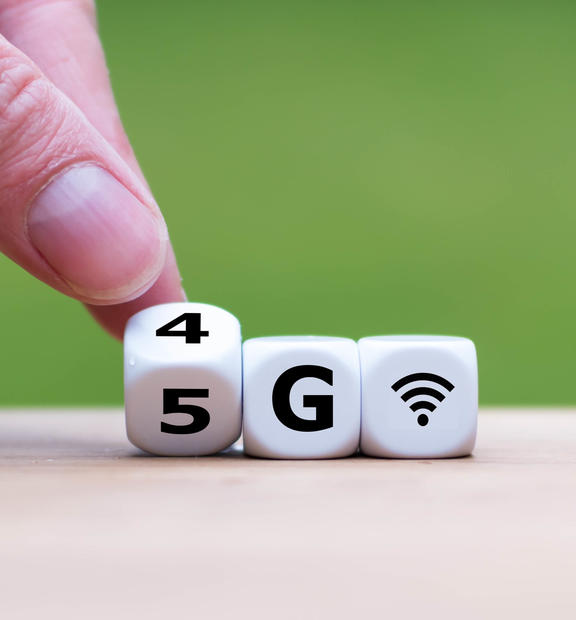Unlike all of its G predecessors, 5G networks come with many new technologies, such as New Radio (NR), Radio Access Network virtualization (vRAN), cloudification of core, and Multi-access Edge Computing (MEC). However, these technologies add significant technical disruption, mainly within the air interface that is critical for enabling 5G.
Since the air interface is the main enabler of 5G, and at the same time, the first requested to be tested, we are addressing here 5G testing challenges related to the air interface.
Key 5G testing challenges include shifting from a cell to beam-centric network. This involves massive MIMO transmission and 3D beamforming technologies that increase capacity, throughput and extend user coverage. Critical to supporting a wide range of frequencies and scheduling for diverse services, is the self-contained transmission, flexible numerology, slot structure for low latency, massive connectivity, and spectral and energy efficiency. Network slicing for dynamic resource allocation will provide optimal QoS/QoE management for vertical applications, including Enhanced Mobile Broadband (eMBB), Ultra-Reliable Low-Latency Communications (URLLC), and Massive Machine Type Communications (mMTC), for both humans and machines.
5G is designed with context-aware QoE service and application delivery at its core. The beam and device-centric 5G network demands device-based testing, that is much more rigorous than any of its G predecessors.
Infovista’s quarter of a century of experience with device-based mobile testing comes at a crucial moment in the 5G lifecycle. It affords us with a unique advantage to overcoming 5G testing challenges for the first deployments with 5G devices.
The main lesson learned from the early 5G device-based testing is that, due to the complexities and technical disruptions mentioned above, there are several aspects that require comprehensive testing. Below are some of the challenges that must be overcome, that will impact the first 5G hybrid LTE-NR implementations.
1. A device’s attainable connectivity
A device’s attainable connectivity and observed coverage is defined by 3D DL beam forming and sweeping, DL and UL beam synchronization, and UL beamforming, tracking and refining (switching) towards beam finding and time to acquisition. Testing performance related to these events requires decoding device-based information elements, and calculating specific KPI measurements.
5G testing challenges emerge from the need to collect and process much more data than for legacy networks, due to adaptive numerology and slot structure, depending on the frequency, bandwidth and application. Ensuring higher measurement acquisition rates depends on the number of beams. This may be as low as 20ms, compared to 100ms that is characteristic of legacy networks. Testing also requires the ability to remove the “noise” from measurement data, and sample only meaningful measurement events.
2. Experienced interference
A device’s experienced interference roots come from, not only traditional legacy sources and causes, but also from the possible beam interference from co-sited and/or non-co-sited beams. This is particularly the case, within the context of multi-band devices supporting both ends of the spectrum - sub 6GHz and mmW frequencies. The 5G testing challenge comes from the need to understand the level at which a device’s performance is affected by the interference from the device itself and/or from other sources, such as beam interference. Optimizing towards interference removal is critical for 5G NR radio link performance, and spectral and energy efficiency.
3. Enabled mobility
A device’s mobility is defined by the active and candidate beam allocations, based on radio characteristics and performance. This can be critical for mmW frequencies, where blockage effects are naturally inherited. Depending on the environment and weather, mmW frequencies can have many orders of larger impact than sub 6 GHz. Decoding the device mobility beam management information is a challenging testing task. This is due to the fact that it is vendor-specific, and therefore, not only different performance is expected, but also different implementations are likely to impact data collection and measurements processing.
4. Achieved performance
Testing the device’s achieved performance values of extreme throughputs (up to 10Gb/s) and very low latencies (less than 1ms at radio layer) faces two main challenges. The first is the ability to collect and process much more data, as well as, set up proper tests that allow data pipe max out (for peak rates). The second is, to ensure artifact-free latency measurements for accuracy within extremely low latency values.
Testing within the context of hybrid LTE-NR implementations requires simultaneous data collection from LTE and NR, as well as real-time processing and visualization of LTE-NR layers, synchronization and interaction. The challenge emerges from the need to simultaneously decode two different API sets, calculate KPIs, and present the data in real-time.
5. Testing lessons learned
Infovista has learned a great deal from our first 5G lifecycle testing. However, during this process, two more important aspects came to light.
First lesson is that 5G device-based testing requires 3D testing. This comes with three main challenges:
-
3D beam representation scenarios, for meaningful evaluation of coverage and interference, to be further used for mobility and performance optimization
-
Outdoor/indoor classification and 3D geolocation
-
Possible need for airborne device-based agents (e.g. drones) challenged by regulations, depending on the country/region
The second lesson is the fact that moving to large deployments and network densification will raise two more crucial topics:
-
AI-based automation of data collection, processing, and analysis
-
ML-based prediction of coverage, interference, mobility, and performance, within the context of industry verticals, such as eMBB for connected cars
Infovista has not only tackled all of these early 5G testing challenges; we are also working to solve challenges expected with larger 5G deployments. To find out more about Infovista 5G test solutions, capabilities and test use cases, please visit us at: https://www.infovista.com/5g-network/










